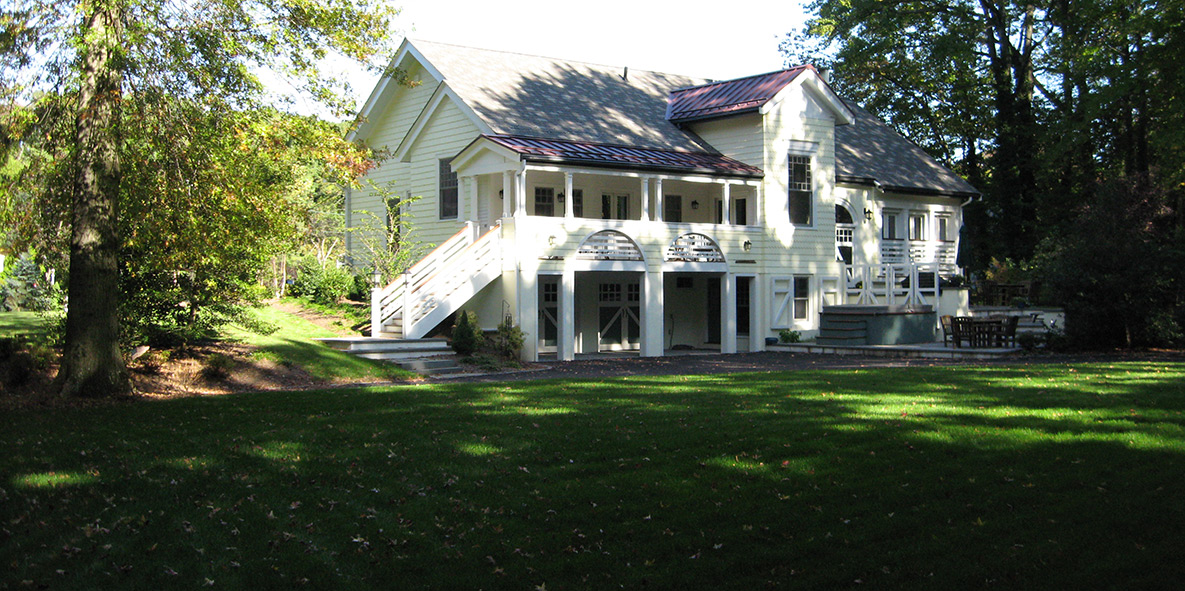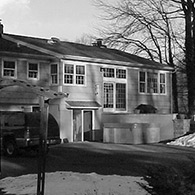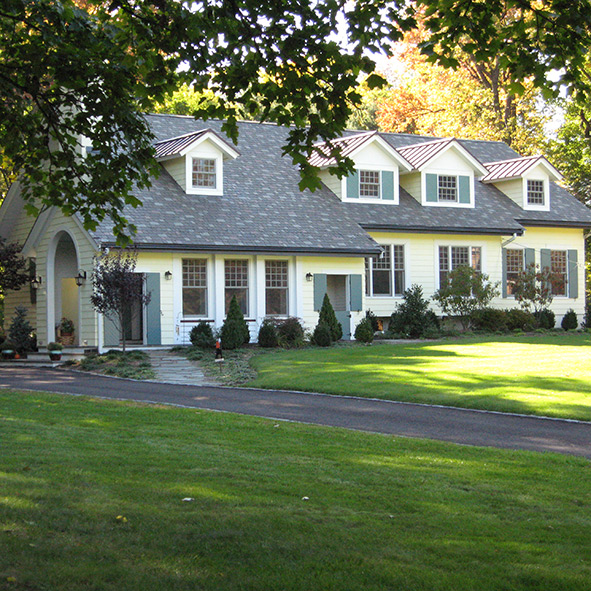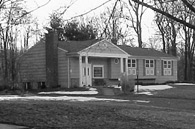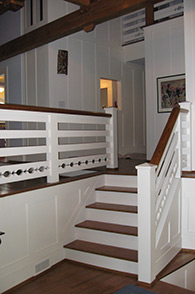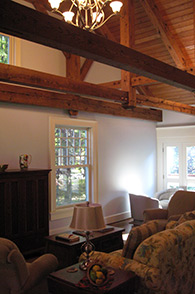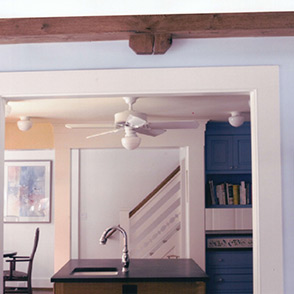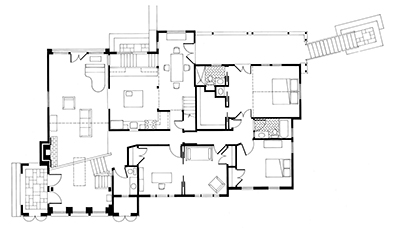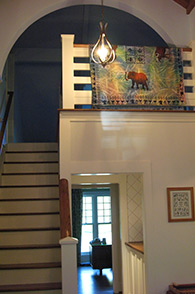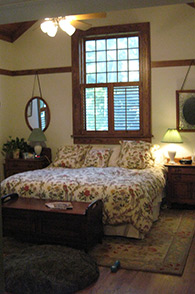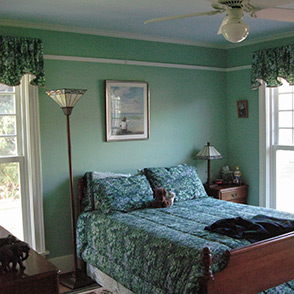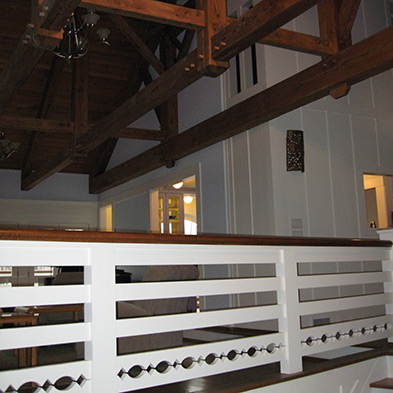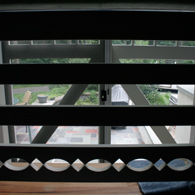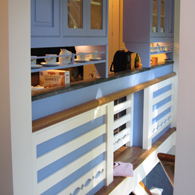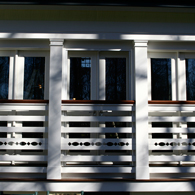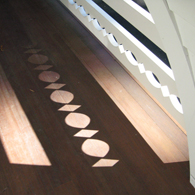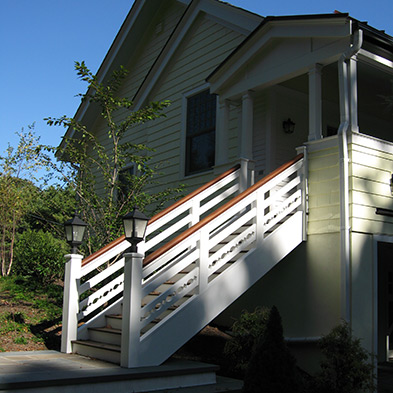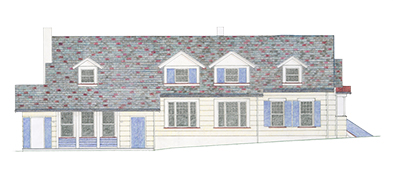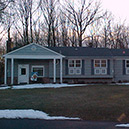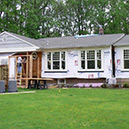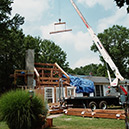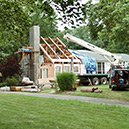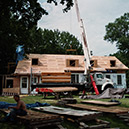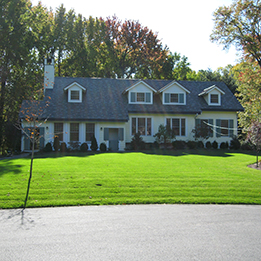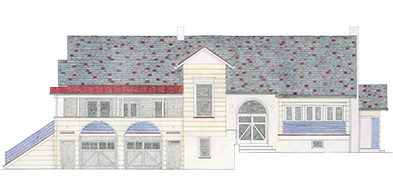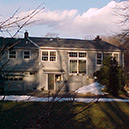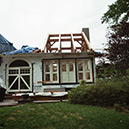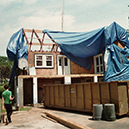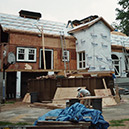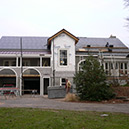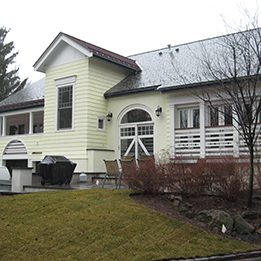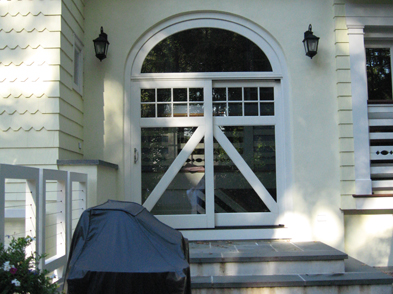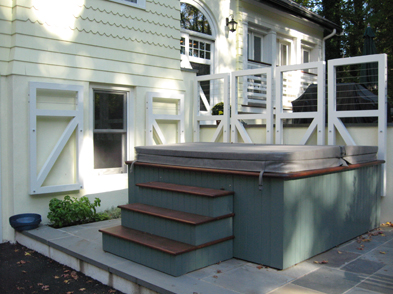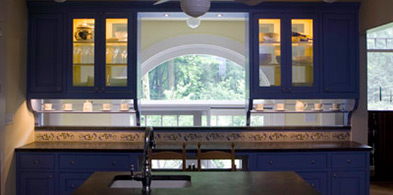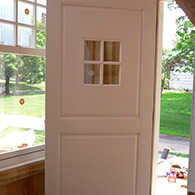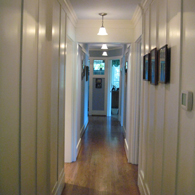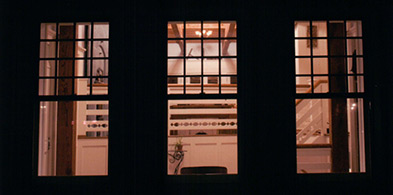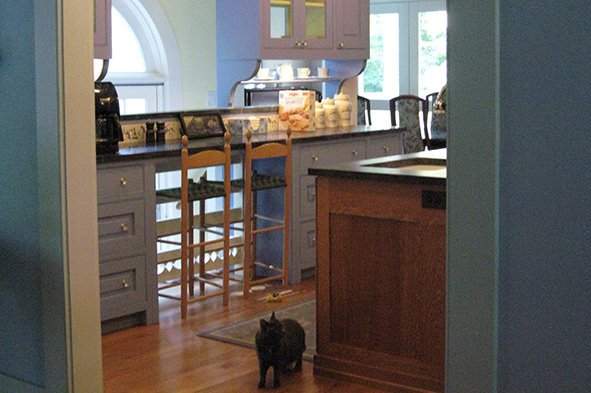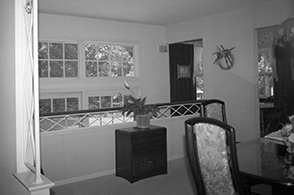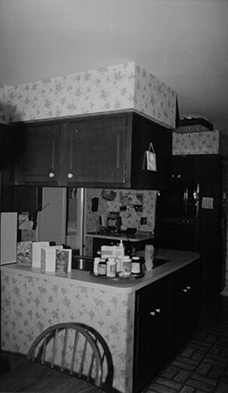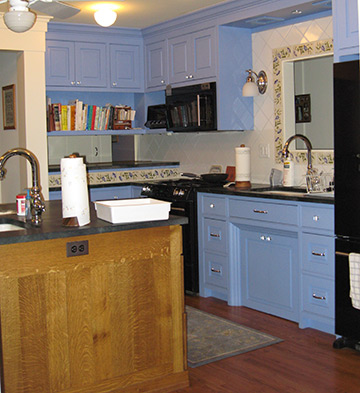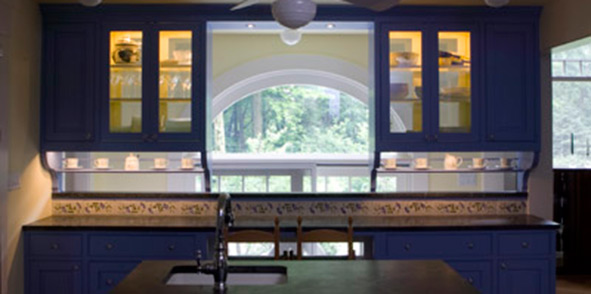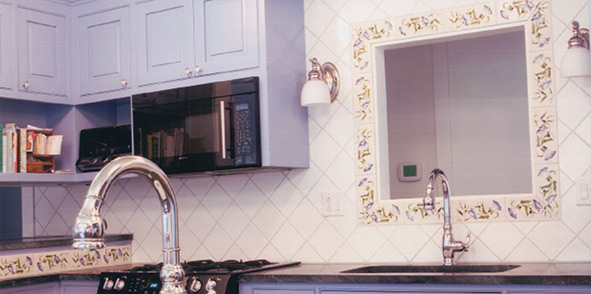Focus |Whole House
Lofty Intentions
When prospective clients approach you to retrofit their
1950’s tract house with a timber frame roof system,
after a long pause and a deep breath,
you say, “When do we start?”
It all started with a sagging roof. With the stick-framed roof of his tract house caving in due to undersized rafters, the husband, a timber frame hobbyist, saw an opportunity to rebuild his roof with, as you may guess, timber framing.

Besides sturdier framing, other practical benefits were gained by this restructuring. A new top floor offers room for future expansion off of a choir loft-like space at the head of a two story dining room. Better insulation in the roof keeps heating and cooling costs down.
Many decorative goals were met as well. The wife asked me to breathe new life into the kitchen and bathrooms while reviving other rooms. The couple challenged me with intricate construction puzzles inside and out.
Aside from obvious technical concerns, I had nagging aesthetic concerns about imposing a massive timber frame on an unassuming house- would the results be all brawn and no beauty? At the heart of my concerns was my aching desire to convert façades into loyal followers of enlightened floor plans. On top of that, the homeowners heaped their wish to retain shiny contemporary furnishings that I just could not see among naturalistic timbers.
To sort through these bedeviling design challenges, I dreamt up a fable to reconcile opposing objectives. It reads like this: the house is a Craftsman style carriage house converted into a family home that combines Colonial Revival tenets with Modern leanings.
To provide a house with soul, I reflected on my fictitious history to fully engage burly timbers while keeping their assertiveness in check with the light hand of refinement. From sagging roof to home, sweet home: after a long renovative journey down a path of big ideas, lofty intentions took root in grounded results.
